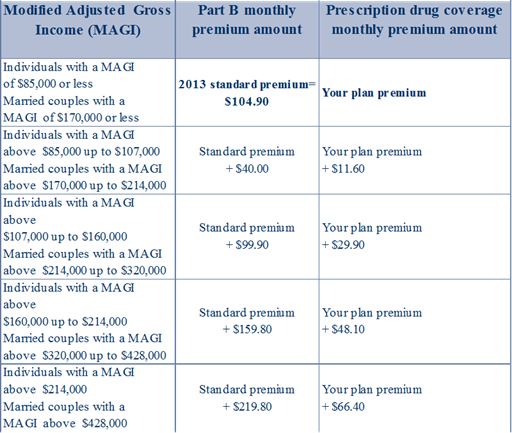2013 Federal Income Tax Exemptions
- Federal income tax exemptions? - Answers
- 2013 Federal Income Tax Return by Haley Weaver
- PPT - Federal Income Tax PowerPoint Presentation, free download - ID:5767697
- 2013 federal income tax exemptions for 2019 2020 in india
You could not claim a personal exemption for yourself if you were someone else's dependent because that taxpayer was already claiming your personal exemption. Even if you weren't claimed as a dependent—but you or your spouse could've been claimed as a dependent by someone—you did not qualify to claim a personal exemption for yourself or your spouse. How Much Was the Personal Exemption Worth? Like many aspects of taxes, the personal exemption amount was indexed for inflation—it increased slightly most years to keep pace with the economy. But if the economy remained relatively steady and inflation was low, the personal exemption amount stayed the same. This happened in tax years 2016 and 2017 when it remained steady at $4, 050 two years in a row. Here's how the exemption worked out in previous years: Historical Personal Exemption Amounts Year Amount 2017 $4, 050 2016 2015 $4, 000 2014 $3, 950 2013 $3, 900 2012 $3, 800 2011 $3, 700 2010 $3, 650 2009 2008 $3, 500 2007 $3, 400 2006 $3, 300 2005 $3, 200 2004 $3, 100 2003 $3, 050 2002 $3, 000 2001 $2, 900 2000 $2, 800 The Personal Exemption Amount Is Reduced Based on Income Unlike standard deductions, which apply equally to all taxpayers, personal exemptions were subject to phase-out limits called the "personal exemption phaseout" (PEP).
Federal income tax exemptions? - Answers
Individual taxpayers can claim an exemption from tax withholding on their paychecks if they had no income tax liability in the previous tax year and expect the same in the current tax year. That's not really a tax break, though — if you make more money than you expect, you could still end up owing at tax time. Finally, certain types of nontaxable income are exempted from being included in taxable income, including … Alimony (depending on factors like when you divorced) Child support Eligible workers' compensation Eligible municipal bond interest (federal income taxes only) Treasury bill interest (state and local income taxes only) To exclude a certain type of income, you typically have to meet certain conditions, so make sure you double check the income qualifies before excluding it from your taxable income. Organizations that qualify for tax-exempt status (which is different from a tax exemption) include those that provide services to the public, such as charitable organizations, churches and religious organizations, social clubs, fraternal societies, veterans organizations and more.
2013 Federal Income Tax Return by Haley Weaver
- SS - Six Sigma | AcronymFinder
- 2013 federal income tax exemptions 2020 india
- Critter care adoptions evans city pa
- 2013 federal income tax exemptions calculator
- File transfer protocol program
- 2013 federal income tax exemptions for 2019 2020 in india
- • Pole dancing classes • companies • USA •
PPT - Federal Income Tax PowerPoint Presentation, free download - ID:5767697

2013 federal income tax exemptions for 2019 2020 in india

If you're a head of household or a single filer, your MAGI starts at $59, 000 and phases out at $69, 000. Unfortunately, you won't be able to claim this credit if you're married but filing separately. What Does it Mean for My Taxes? Of course, the main question for most tax filers is, "How does this affect me? " Here are a few bottom-line takeaways to consider: You're still more likely to take the standard deduction. The higher standard deduction alone will be enough to push many taxpayers into taking it rather than itemizing. But taxpayers who used to itemize due to hefty mortgage interest, lots of charitable contributions, or high state and local income and property taxes may find those more-limited deductions aren't enough to push them over the threshold now. Taxes may be simpler in some ways but more complex in others. Taking the standard deduction is, indeed, simpler than itemizing. But it may take some time to hash out all the practical implications of the tax law. So be prepared for some complications along the way.
Phasing out means that the exemption gradually reduces as a taxpayer's income increases. Every $2, 500 a taxpayer earned above a set threshold reduced their personal exemption by 2%. The reduction could be applied fractionally to amounts that exceeded the threshold by less than $2, 500. The personal exemption phased out by 2% for each $1, 250 of adjusted gross income over the threshold for people who used the married-filing-separately status. Phaseout Range for Personal Exemptions for 2017 Filing Status Phaseout Begins Phaseout Ends Married Filing Jointly $313, 800 $436, 300 Qualifying Widow(er) 313, 800 436, 300 Head of Household 287, 650 410, 150 Single 261, 500 384, 000 Married Filing Separately 156, 900 218, 150 Here's an example of how this works. Suppose Darla had an adjusted gross income of $300, 150 in 2017. She filed as head of household and claimed two personal exemptions, one for herself and one for her child. The relevant threshold for 2017 was $287, 650 for head of household filers.